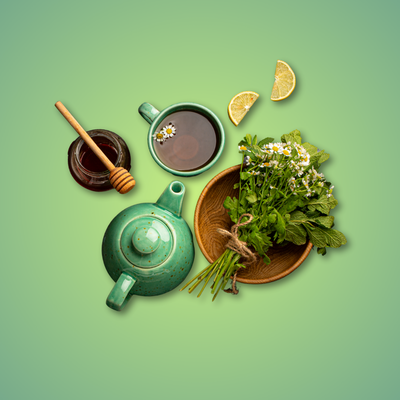The world of tea offers a delightful array of choices, each with its own unique characteristics and potential health benefits. Among the many options, "Red Rose Tea" and "Rose Tea" often pique the curiosity of tea enthusiasts, particularly women seeking natural ways to enhance their well-being. This exploration aims to delve into the nuances of these two teas, uncovering their ingredients, health advantages, flavor profiles, scientific backing, and historical significance, with a special focus on how they might benefit women.
What Exactly is Red Rose Tea? Unpacking the Brand's Offerings
It is important to first understand that "Red Rose Tea" primarily functions as a well-known brand name with a diverse portfolio of tea products, rather than representing a single, specific tea type with a fixed set of ingredients [Insight 1]. This means that the composition and potential benefits can vary significantly depending on the particular "Red Rose Tea" product being considered. The brand offers a spectrum of teas, ranging from classic black tea blends to flavorful, caffeine-free herbal infusions. To truly understand the potential of "Red Rose Tea," it is necessary to examine its different product lines individually.
The cornerstone of the "Red Rose Tea" brand is arguably its "Original Black Tea." The primary components of this blend are "Orange Pekoe and Pekoe Cut Black Tea" [1]. The term "Orange Pekoe" refers to a specific grading of black tea leaves based on their size and the presence of young buds, and it does not inherently indicate an orange flavor [4]. As a black tea, the "Original" blend naturally contains caffeine, a characteristic known for its stimulating effects [3]. Interestingly, the Amazon product listing for the "Red Rose Original Black Tea" includes a more extensive list of "Special Ingredients" that goes beyond just black tea leaves. This list includes Turmeric, Safflower, Honey, Lemongrass, Orange Peel, Lemon Peel, Cardamom, Ginger, Hibiscus, and Rose Hip [3]. This creates a notable difference compared to the ingredient information typically found on the official Red Rose Tea website, which primarily mentions "Orange Pekoe and Pekoe Cut Black Tea" [1]. This discrepancy raises questions about potential variations in product formulations or the accuracy of the information provided across different platforms [Insight 2]. Consumers may encounter conflicting information regarding the ingredients depending on the source they consult. Therefore, it is advisable for individuals to always refer to the ingredient list printed on the specific product packaging they purchase to obtain the most accurate details. This is particularly important as variations in ingredients can lead to differences in the tea's flavor profile and potential health benefits.
Beyond their flagship black tea, "Red Rose Tea" also offers a delightful range of caffeine-free herbal infusions known as "Sweet Temptations" [7]. This product line is specifically designed to provide dessert-like flavors without the added sugar and calories typically associated with such treats. The "Sweet Temptations" range includes a variety of appealing flavors, each with its own unique blend of ingredients [9]. For instance, the Strawberry Cheesecake flavor contains Dried Apple, Hibiscus, Natural Flavor, Rose Hip, and Stevia. The Lemon Cake variety includes Rose Hip, Dried Apple, Chamomile, Natural Flavor, Lemon Peel, Orange Peel, Lemongrass, Roasted Chicory, Citric Acid, and Stevia. The Blueberry Muffin blend features Apple, Hibiscus, Rose Hip, Natural Flavor, Blueberry, and Stevia Leaf Extract. Lastly, the Caramel Apple Pie flavor consists of Dried Apple, Rose Hip, Hibiscus, Natural Flavor, Chamomile, Stevia, and Roasted Chicory. A common thread across several of these "Sweet Temptations" flavors is the inclusion of rose hip. Notably, these teas are all naturally caffeine-free, making them a suitable choice for those seeking a sweet indulgence without the stimulating effects of caffeine [7]. The use of stevia as a sweetener in these blends highlights the brand's aim to cater to health-conscious consumers looking for sugar-free alternatives [Insight 3].
Potential Health Perks: Tailored to the Red Rose Tea Blend
The health benefits associated with "Red Rose Tea" will differ depending on which specific product line is being consumed. The "Original Black Tea" offers the well-established general health advantages typically linked to black tea consumption [3]. Black tea is known to be rich in antioxidants, including polyphenols like theaflavins and flavonoids, which help the body combat harmful free radicals [4]. Regular consumption of black tea has been associated with potential benefits for heart health, such as a reduced risk of heart disease, heart attack, and stroke [3]. It may also contribute to improved blood vessel function and potentially lower levels of LDL cholesterol and blood pressure [4]. Furthermore, black tea might positively influence gut health by promoting the growth of beneficial bacteria [13]. The presence of caffeine and the amino acid L-theanine in black tea can also contribute to enhanced focus and mental alertness [6]. Some studies suggest that black tea consumption may even aid in managing blood sugar levels [4]. Beyond these specific benefits, drinking black tea also contributes to overall hydration, which is essential for numerous bodily functions [3]. While black tea offers these general health advantages that are applicable to everyone, the available research does not specifically highlight benefits that are unique to or particularly relevant for women's health in the context of this "Red Rose" blend [Insight 4]. The focus of the research on black tea tends to be on broad health outcomes rather than gender-specific effects.
In contrast, the "Red Rose Sweet Temptations" herbal teas primarily offer the benefit of a guilt-free indulgence [7]. Their main appeal lies in providing the satisfying flavors of popular desserts without the added sugar and high calorie content. However, it's worth noting the presence of rose hip in several of these blends. As will be discussed later, rose hip itself possesses a range of potential health benefits. Additionally, other ingredients found in these herbal infusions, such as chamomile (known for its calming properties) and hibiscus (a source of antioxidants), may contribute mild wellness benefits [9]. Ultimately, the primary advantage of the "Sweet Temptations" range appears to be psychological, offering a healthier way to satisfy sweet cravings for those mindful of their sugar and calorie intake [Insight 5].
The Delicate Allure of Rose Tea: Embracing the Floral Brew
Unlike the brand-centric nature of "Red Rose Tea," "Rose Tea" typically refers to a specific type of herbal infusion created directly from the petals and sometimes the buds of various rose flowers [19]. This fragrant tea can be prepared using either fresh or dried rose petals [20]. It is generally recommended to use organic roses that have not been treated with pesticides or other harmful chemicals to ensure a safe and healthy brew [21]. In its pure form, "Rose Tea" is naturally caffeine-free, making it a versatile beverage that can be enjoyed at any time of the day without disrupting sleep patterns [19]. It is also important to note that some variations of "Rose Tea" may include rosehips, which are the fruit of the rose plant. Rosehips have a distinct tart flavor and are particularly rich in Vitamin C, offering a different set of potential benefits compared to rose petals alone [21]. Furthermore, rose petals are sometimes blended with other types of tea, such as black tea, to create unique flavor combinations and potentially combine the benefits of both ingredients [24]. The key distinction here is that "Rose Tea" focuses on the essence of the rose plant itself, offering a more specific floral infusion compared to the broader range of products under the "Red Rose Tea" brand [Insight 6].

Wellness for Women: Targeted Benefits from the Rose
"Rose Tea" has garnered attention for its potential health benefits, particularly for women's well-being. One of the most notable advantages is its potential to soothe menstrual discomfort [19]. Many women experience symptoms like cramps (dysmenorrhea), bloating, pain, and even emotional distress during menstruation. Research suggests that rose tea may help alleviate these symptoms. A study conducted in Taiwan, for example, demonstrated a significant reduction in period-related symptoms, including pain, distress, and anxiety, among adolescent girls who regularly consumed rose tea [19]. This suggests that rose tea could be a valuable natural remedy for women seeking relief from menstrual discomfort [Insight 7].
Beyond menstrual health, rose tea may also contribute to radiant skin and hair [19]. Rose petals contain beneficial vitamins like E and C, which are known to promote healthy skin [19]. The antioxidants present in rose tea can also help combat free radicals, which contribute to premature aging and skin damage [19]. Furthermore, the hydrating nature of rose tea is essential for maintaining skin's elasticity and overall health [20]. Traditionally, roses have also been used to improve hair health by potentially reducing oily scalp and promoting a healthier scalp environment [30]. These multifaceted benefits make rose tea an appealing choice for women interested in natural beauty and self-care [Insight 8].
The delicate aroma and composition of rose tea may also have a positive impact on mood and emotional well-being [19]. It is believed to help alleviate stress, reduce feelings of anxiety, and promote a sense of calm and relaxation [19]. Some studies suggest that rose tea may even have antidepressant effects and can contribute to better sleep, which is vital for emotional health [19]. Roses contain L-theanine, an amino acid known to influence brain function in ways that can reduce anxiety and improve sleep quality, further supporting the calming effects of rose tea [30]. This makes rose tea a comforting and supportive beverage, particularly beneficial for women who may experience stress or emotional fluctuations [Insight 9].
Beyond these benefits specifically relevant to women, rose tea also offers a range of additional wellness perks. It is rich in antioxidants, which play a crucial role in protecting the body against chronic diseases by neutralizing harmful free radicals [19]. Rose tea also possesses potential anti-inflammatory properties, which can contribute to overall health and well-being [19]. Traditionally, it has been used as a digestive aid, potentially helping to soothe stomach issues and improve nutrient absorption [19]. The presence of antioxidants and sometimes Vitamin C may also contribute to immune system support [19]. Furthermore, due to its hydrating nature and the presence of polyphenols, rose tea may even play a role in weight management [19]. These diverse benefits highlight rose tea's potential as a holistic wellness beverage with particular advantages for women's health [Insight 10].
Red Rose vs. Rose Tea: A Comparative Glance
To better understand the differences between "Red Rose Tea" and "Rose Tea," let's take a closer look at their key characteristics:
|
Feature |
Red Rose Tea (Original Black Tea) |
Red Rose Tea (Sweet Temptations) |
Rose Tea (Pure) |
|
Primary Ingredient |
Orange Pekoe and Pekoe Cut Black Tea |
Various herbs (e.g., rose hip, apple, chamomile, hibiscus) |
Rose petals and/or buds |
|
Caffeine Content |
High |
None |
None |
|
Other Potential Ingredients |
Turmeric, Safflower, Honey, Lemongrass, Orange Peel, Lemon Peel, Cardamom, Ginger, Hibiscus, Rose Hip |
Flavor-specific ingredients (e.g., blueberry, lemon peel), Stevia, Natural Flavors, Citric Acid |
May include rosehips or be blended with other teas |
The table above clearly illustrates the fundamental differences in the primary ingredients of these teas [Insight 11]. "Red Rose Original Black Tea" is based on traditional black tea leaves and contains caffeine. "Red Rose Sweet Temptations" are herbal infusions without caffeine, featuring a variety of herbs and natural sweeteners. In contrast, pure "Rose Tea" is made from rose petals or buds and is also naturally caffeine-free. This core difference in composition leads to variations in flavor profiles and the types of potential health benefits offered.
In terms of flavor, "Red Rose Original Black Tea" typically offers a robust and full-bodied taste, often enjoyed with milk and sugar for a classic tea experience [1]. "Red Rose Sweet Temptations" are designed to deliver distinctly sweet, dessert-like flavors, providing a palatable sugar-free option [7]. "Rose Tea," on the other hand, is characterized by its delicate, floral aroma and a subtly sweet taste, with variations depending on the specific type of rose used [19]. Rosehip tea, a variation, will have a tarter, more fruit-like flavor [21]. These distinct flavor profiles cater to different preferences and drinking occasions [Insight 12].
When considering the benefits specifically for women, "Rose Tea" appears to offer more targeted advantages compared to the "Red Rose Tea" brand's offerings [Insight 13]. While "Red Rose Original Black Tea" provides general health benefits associated with black tea, the research does not highlight specific advantages for women's health in this particular blend. "Red Rose Sweet Temptations" primarily serve as a sugar-free treat, although they do contain rose hip, which has its own potential benefits. In contrast, pure "Rose Tea" shows stronger evidence for benefits particularly relevant to women, especially in alleviating menstrual cramps and related symptoms, promoting skin health, and enhancing mood and emotional well-being. It also offers general antioxidant and anti-inflammatory properties.
The Science Corner: Peering into the Research
Scientific studies provide some support for the health claims associated with both rose tea and black tea. Research published in the Journal of Midwifery & Women's Health indicated that rose tea consumption significantly reduced dysmenorrhea, distress, and anxiety in adolescent girls [19]. Studies have also shown that rose tea possesses significant antioxidant activity, comparable to green tea [21]. Furthermore, research has explored the potential of rose petal extracts in inhibiting cancer cells [20] and the traditional use of rose tea for its anti-fatigue, sedative, and stress-reducing effects [19]. The benefits of black tea, the base of "Red Rose Original," are also supported by a body of research indicating positive impacts on heart health, cholesterol levels, blood pressure, and gut health [4]. It is important to note that while these studies offer valuable insights, further research, particularly involving human subjects and focusing on the effects of brewed tea rather than concentrated extracts, is often needed to fully validate these claims [Insight 14].
A Sip Through History: Tracing Traditional Uses
Both rose tea and black tea have rich histories and cultural significance. Rose tea has been used for centuries in various traditional medicine systems. In Traditional Chinese Medicine (TCM), rose tea is valued for its ability to regulate qi and address a range of conditions, including digestive issues, fatigue, mood imbalances, and menstrual problems [19]. Traditional Persian medicine considered roses a powerful remedy for the heart, both emotionally and physically [33]. In the Middle East, rose petals have long been used to aid digestion [19]. Ayurveda, the ancient Indian system of medicine, considers rose "tridoshic" and uses it to promote emotional well-being, support digestion, and balance hormones [32]. Even in Ancient Greece and Rome, rosehips were recognized for their healing properties [34]. This widespread and long-standing traditional use of rose tea across diverse cultures, particularly for women's health concerns, suggests a deep-rooted belief in its therapeutic properties [Insight 15].
In contrast, the history of "Red Rose Tea" primarily centers around the brand itself, established in 1890. The brand has a long tradition of sourcing quality black tea leaves to create its signature blends [1]. The inclusion of collectible figurines in their tea boxes has also become a distinctive feature of the brand [1]. While "Red Rose Tea" is a well-established and popular brand known for its black tea, it does not share the same deep historical roots in traditional medicine for women as pure "Rose Tea" [Insight 16].
Conclusion: Choosing Your Perfect Bloom for Well-being
In conclusion, while both "Red Rose Tea" and "Rose Tea" offer unique qualities, they cater to different needs and preferences. "Red Rose Tea" encompasses a brand with various product lines. The "Original Black Tea" provides a classic, caffeinated tea experience with general health benefits associated with black tea. The "Sweet Temptations" range offers a guilt-free way to enjoy sweet flavors without added sugar or calories. On the other hand, pure "Rose Tea" stands out as a caffeine-free herbal infusion with promising benefits specifically for women's health, particularly in alleviating menstrual discomfort, promoting skin health, and enhancing mood.
For women seeking an everyday caffeinated beverage with general health perks, "Red Rose Original Black Tea" remains a reliable choice. Those looking for a sugar-free and low-calorie way to satisfy their sweet cravings might find the "Red Rose Sweet Temptations" appealing. However, for women specifically interested in a caffeine-free tea that may offer targeted support for menstrual discomfort, contribute to healthy skin, and promote emotional well-being, pure "Rose Tea" appears to be the more suitable option. Ultimately, the best choice depends on individual needs and preferences. Exploring both the diverse offerings of the "Red Rose Tea" brand and the delicate floral infusion of "Rose Tea" can help women discover which "bloom" best supports their personal well-being.






